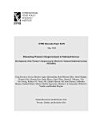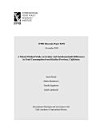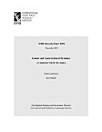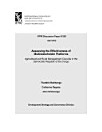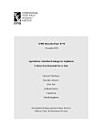Nutrition-sensitive agriculture diversification and dietary diversity: Panel data evidence from Tajikistan
Takeshima, Hiroyuki · Lambrecht, Isabel · Akramov, Kamiljon · Ergasheva, Tanzila
2024-ж. апр. · IFPRI Discussion Papers 2249-китеп · Intl Food Policy Res Inst
Электрондук китеп
48
Барактар
family_home
Кошсо болот
info
reportРейтинг жана сын-пикирлер текшерилген жок Кеңири маалымат
Учкай маалымат
Nutrition-sensitive agricultural diversification continues to receive interest among developing country stakeholders as a viable option for achieving dual goals of poverty reduction and food/nutrition security improvements. Assessing the effectiveness of this strategy is also essential in countries like Tajikistan. We attempt to enrich the evidence base in this regard. We assess the linkages between household-level agricultural diversification and dietary diversity (both household- and individual-levels) using unique panel samples of households and individual women of reproductive ages in the Khatlon province. Using difference-in-difference propensity-score methods and panel fixed-effects instrumental variable regressions, we show that higher agricultural diversification together with greater overall production per worker and land at the household level leads to higher dietary diversity, particularly in areas with poor food market access. Typology analyses and crop-specific analyses suggest that vegetables, fruits, legumes/nuts/seeds, dairy products and eggs are particularly important commodities for which a farmer’s own production contributes to dietary diversity improvement. Furthermore, decomposition exercises within the subsistence farming framework suggest that nutritional returns and costs of agricultural diversification vary across households, and expected nutritional returns may be partly driving the adoption of agricultural diversification. In other words, households’ decisions to diversify agriculture may be partly driven by potential nutritional benefits associated with enhanced direct on-farm access to diverse food items rather than farm income growth alone. Our findings underscore the importance of supporting household farm diversification in Tajikistan to support improved nutrition intake, especially among those living in remote areas. In a low-income setting with limited local employment opportunities that is vulnerable to a wide range of external shocks, this will likely continue to be one of the most straightforward and realistic paths to improving household’s nutrition resilience.
Бул электрондук китепти баалаңыз
Оюңуз менен бөлүшүп коюңуз.
Окуу маалыматы
Смартфондор жана планшеттер
Android жана iPad/iPhone үчүн Google Play Китептер колдонмосун орнотуңуз. Ал автоматтык түрдө аккаунтуңуз менен шайкештелип, кайда болбоңуз, онлайнда же оффлайнда окуу мүмкүнчүлүгүн берет.
Ноутбуктар жана компьютерлер
Google Play'ден сатылып алынган аудиокитептерди компьютериңиздин веб браузеринен уга аласыз.
eReaders жана башка түзмөктөр
Kobo eReaders сыяктуу электрондук сыя түзмөктөрүнөн окуу үчүн, файлды жүктөп алып, аны түзмөгүңүзгө өткөрүшүңүз керек. Файлдарды колдоого алынган eReaders'ке өткөрүү үчүн Жардам борборунун нускамаларын аткарыңыз.




